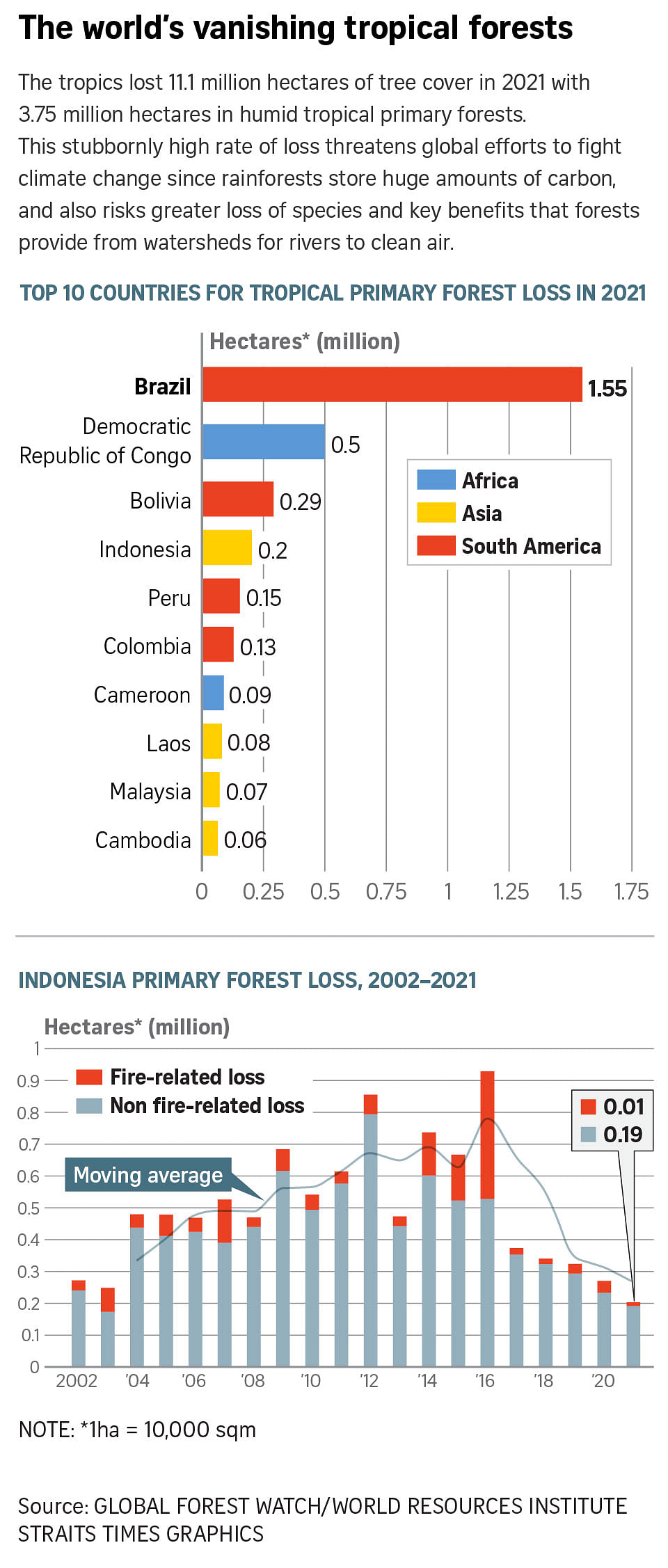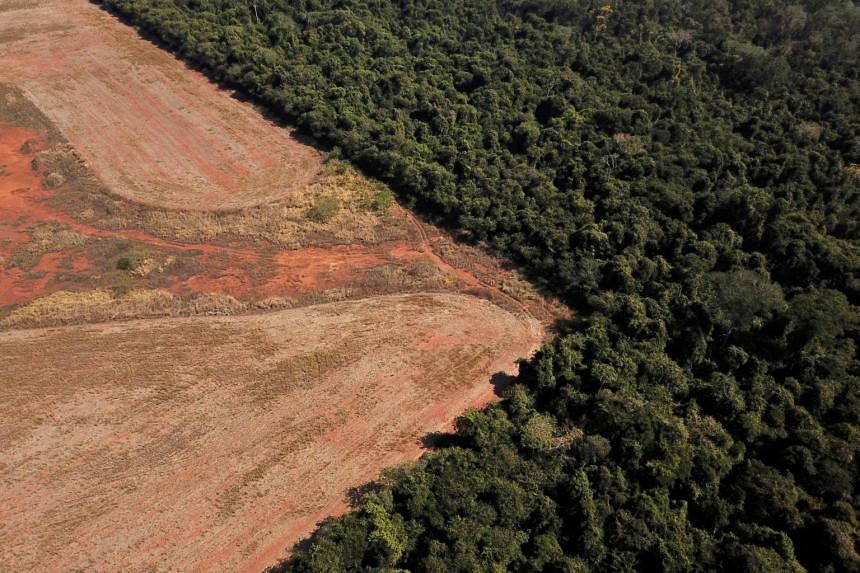SINGAPORE - The world lost primary rainforests in the tropics at the rate of 10 football pitches a minute in 2021, a stubbornly high level that undermines global pledges to slash deforestation and increases the threat from climate change, a global study released on Thursday (April 28) shows.
The annual forest loss analysis by Global Forest Watch, which is backed by the non-profit World Resources Institute (WRI), found that the tropics lost 11.1 million hectares of tree cover in 2021. This includes 3.75 million ha of humid tropical primary forests - an area roughly the size of Bhutan.
The loss of tropical primary forests also caused the emissions of 2.5 billion tonnes of carbon dioxide (CO2), equivalent to the annual fossil fuel emissions of India, underscoring the climate threat. CO2 is the main greenhouse gas.
Primary forests are dense, undisturbed areas that contain large amounts of trees, are rich in species and are key to regulating the climate, including rainfall patterns. They also support millions of indigenous people.
But over the past two decades, the tropics have been losing millions of hectares of primary forests and other types of forests.
Large-scale agriculture remains the top cause, mainly oil palm, soy, cattle ranching and wood for fuel. Fires and logging for timber are other key drivers.
To try to address the crisis, 141 heads of state committed during the COP26 climate talks last November to halt and reverse forest loss by 2030.
But the report's findings underscore the challenge of following through on that pledge and that actions by countries really need to step up.
"Those actions are going to have to be dramatic," Ms Frances Seymour, WRI distinguished senior fellow, told a press briefing.
Last year, the tropics lost 11 per cent less primary forest than 2020. But that followed a 12 per cent increase from 2019 to 2020, mostly due to a higher level of fire-related loss, according to the study, a collaboration with the University of Maryland in the United States.
Brazil topped the list with 1.55 million ha lost, followed by the Democratic Republic of Congo with nearly 500,000 ha and Bolivia with 291,391 ha.
In Indonesia, home to the world's third largest expanse of rainforest, the rate of primary forest loss declined for the fifth straight year, falling by 25 per cent in 2021 compared with 2020, helped by a mix of government and private sector efforts as well as better fire management.
Malaysia's forest loss fell 1 per cent, also the fifth consecutive year of decline.
But the overall global rate of loss remains high, leading to large amounts of greenhouse gas emissions and exacerbating the risks from climate change, which is already fuelling hotter and drier conditions that are causing larger and more widespread forest fires.
Forests soak up large amounts of CO2 and help cool the planet. Chop them down and CO2 levels rise further, heating up the planet and triggering hotter conditions for fires that in turn cause more devastating fires such as those in Brazil, Bolivia, northern Russia as well as Indonesia in 2015. Climate change plus forest clearing is creating a vicious circle.
Outside of the tropics, boreal forests in the Northern Hemisphere experienced the highest rates of tree cover loss in 2021, mainly due to fires, the study found. Russia suffered the worst fire season since record-keeping began in 2001, with more than 6.5 million ha of tree cover loss in 2021.

Ms Seymour said climate change itself was making it harder to maintain the world's remaining forests.
She said the data in the new study "reveals how much of the year-to-year variability and tree cover loss is due to fires".
"And this loss of forest resilience is edging us closer and closer to tipping points, such as the wholesale conversion of the Amazon rainforest to a savanna grassland."
"That would release enough carbon into the atmosphere to blow the Paris Agreement goals right out of the water," she said, referring to the goals of limiting global warming to well below 2 deg C and ideally, 1.5 deg C above pre-industrial levels.


